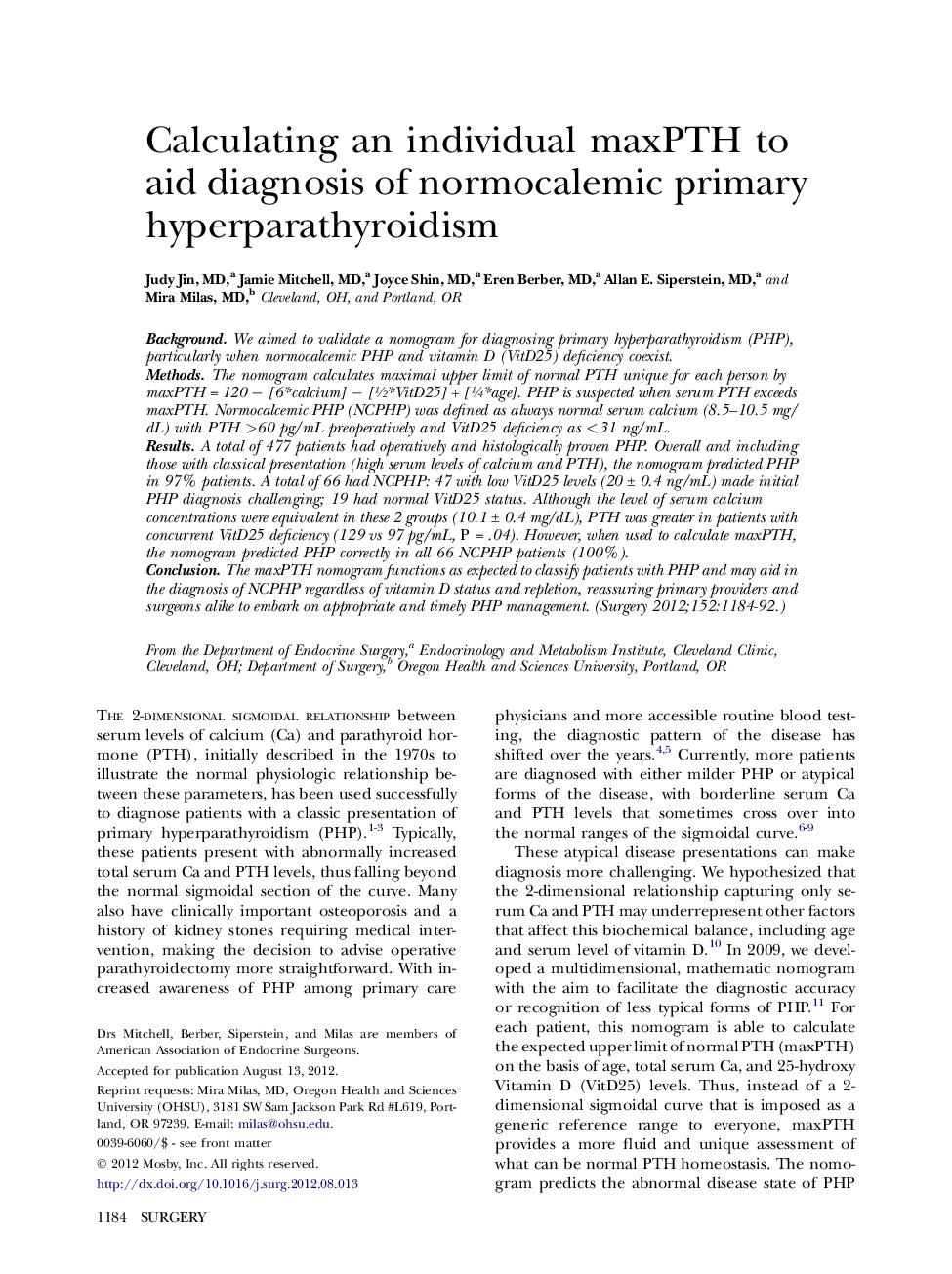| Article ID | Journal | Published Year | Pages | File Type |
|---|---|---|---|---|
| 4307741 | Surgery | 2012 | 9 Pages |
BackgroundWe aimed to validate a nomogram for diagnosing primary hyperparathyroidism (PHP), particularly when normocalcemic PHP and vitamin D (VitD25) deficiency coexist.MethodsThe nomogram calculates maximal upper limit of normal PTH unique for each person by maxPTH = 120 − [6*calcium] − [½*VitD25] + [¼*age]. PHP is suspected when serum PTH exceeds maxPTH. Normocalcemic PHP (NCPHP) was defined as always normal serum calcium (8.5–10.5 mg/dL) with PTH >60 pg/mL preoperatively and VitD25 deficiency as <31 ng/mL.ResultsA total of 477 patients had operatively and histologically proven PHP. Overall and including those with classical presentation (high serum levels of calcium and PTH), the nomogram predicted PHP in 97% patients. A total of 66 had NCPHP: 47 with low VitD25 levels (20 ± 0.4 ng/mL) made initial PHP diagnosis challenging; 19 had normal VitD25 status. Although the level of serum calcium concentrations were equivalent in these 2 groups (10.1 ± 0.4 mg/dL), PTH was greater in patients with concurrent VitD25 deficiency (129 vs 97 pg/mL, P = .04). However, when used to calculate maxPTH, the nomogram predicted PHP correctly in all 66 NCPHP patients (100%).ConclusionThe maxPTH nomogram functions as expected to classify patients with PHP and may aid in the diagnosis of NCPHP regardless of vitamin D status and repletion, reassuring primary providers and surgeons alike to embark on appropriate and timely PHP management.
